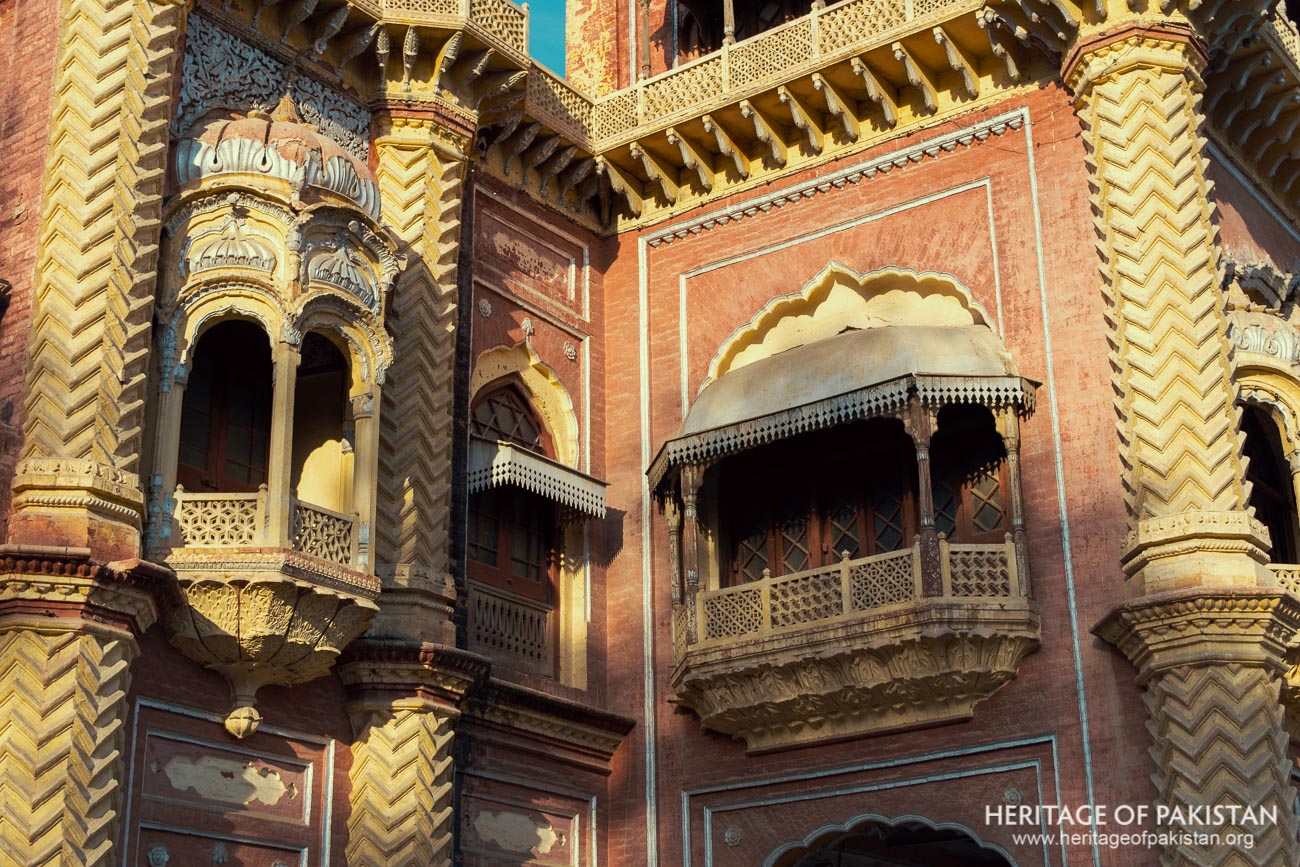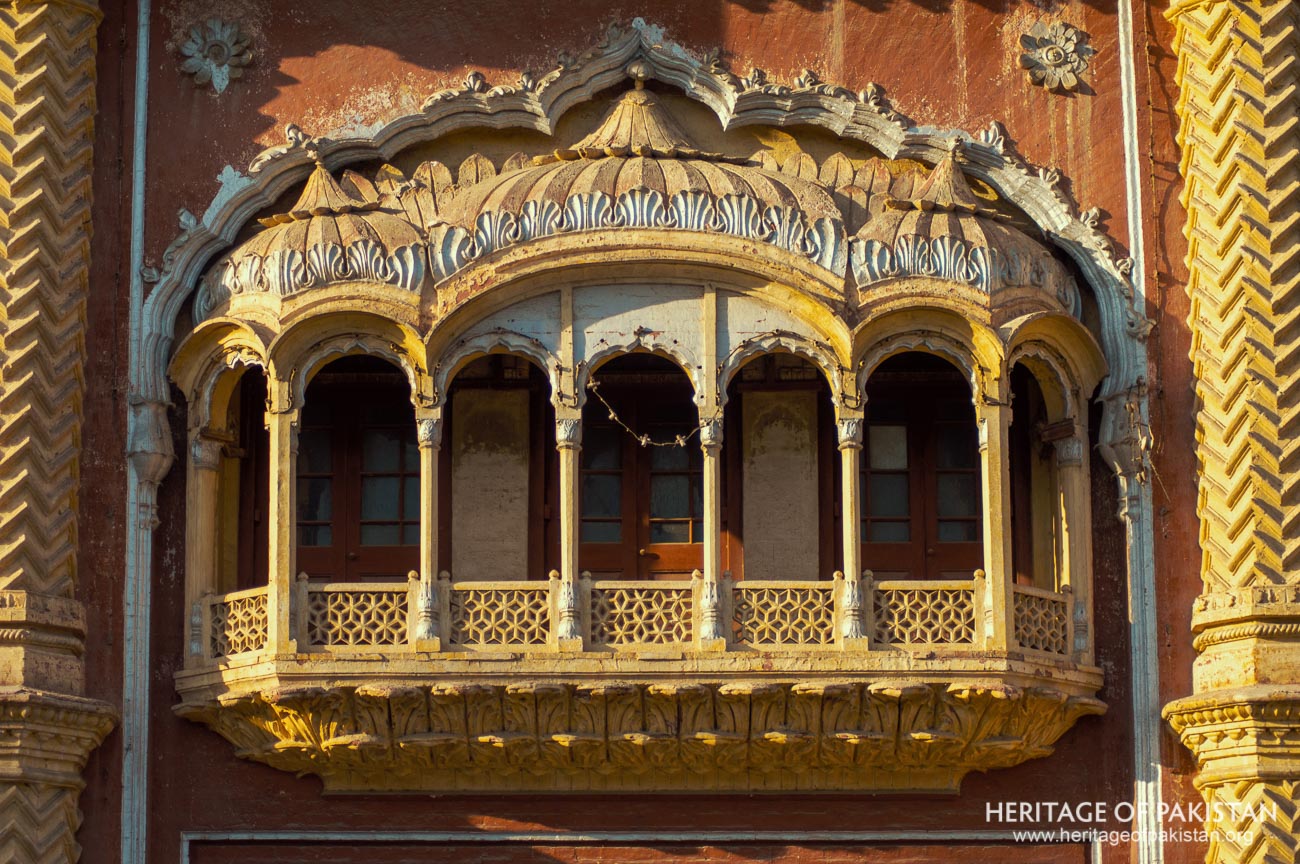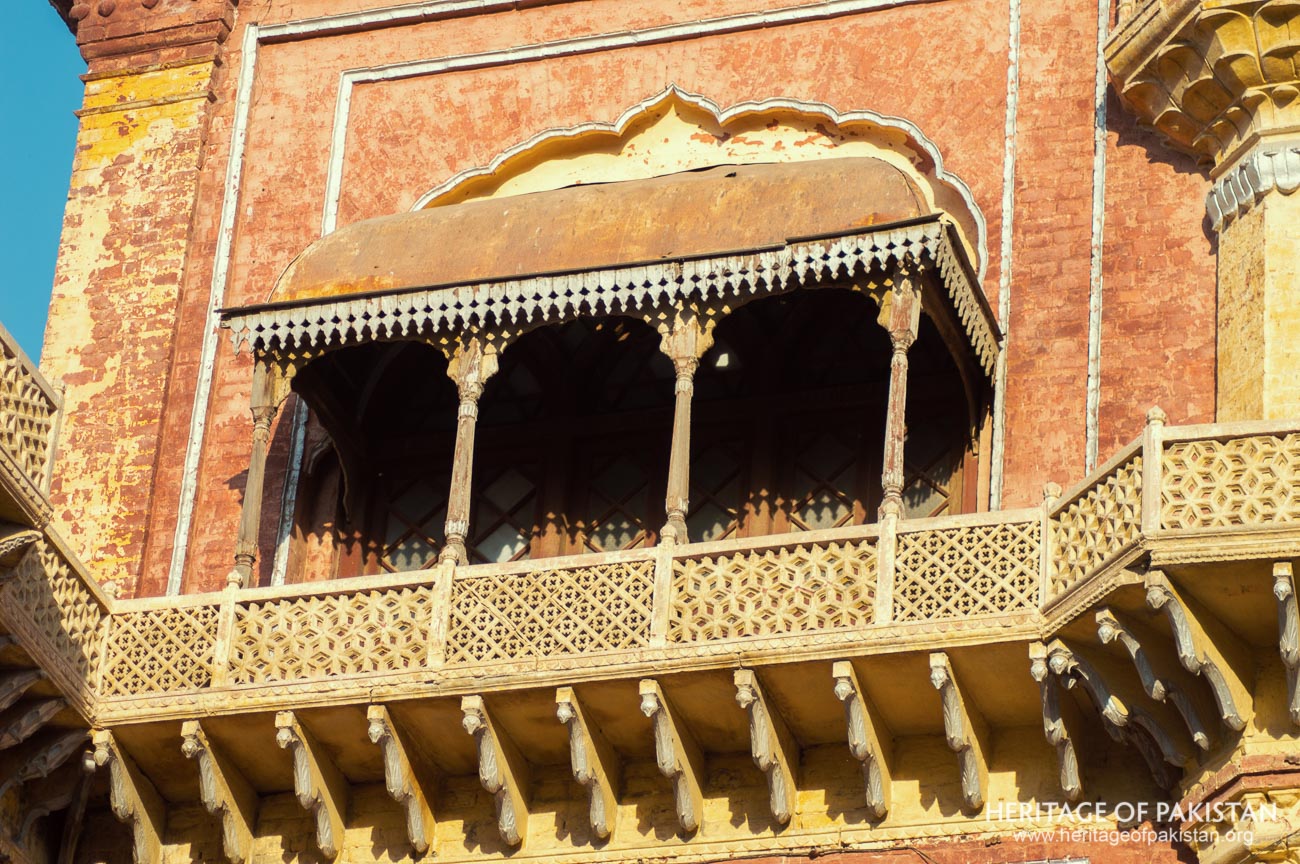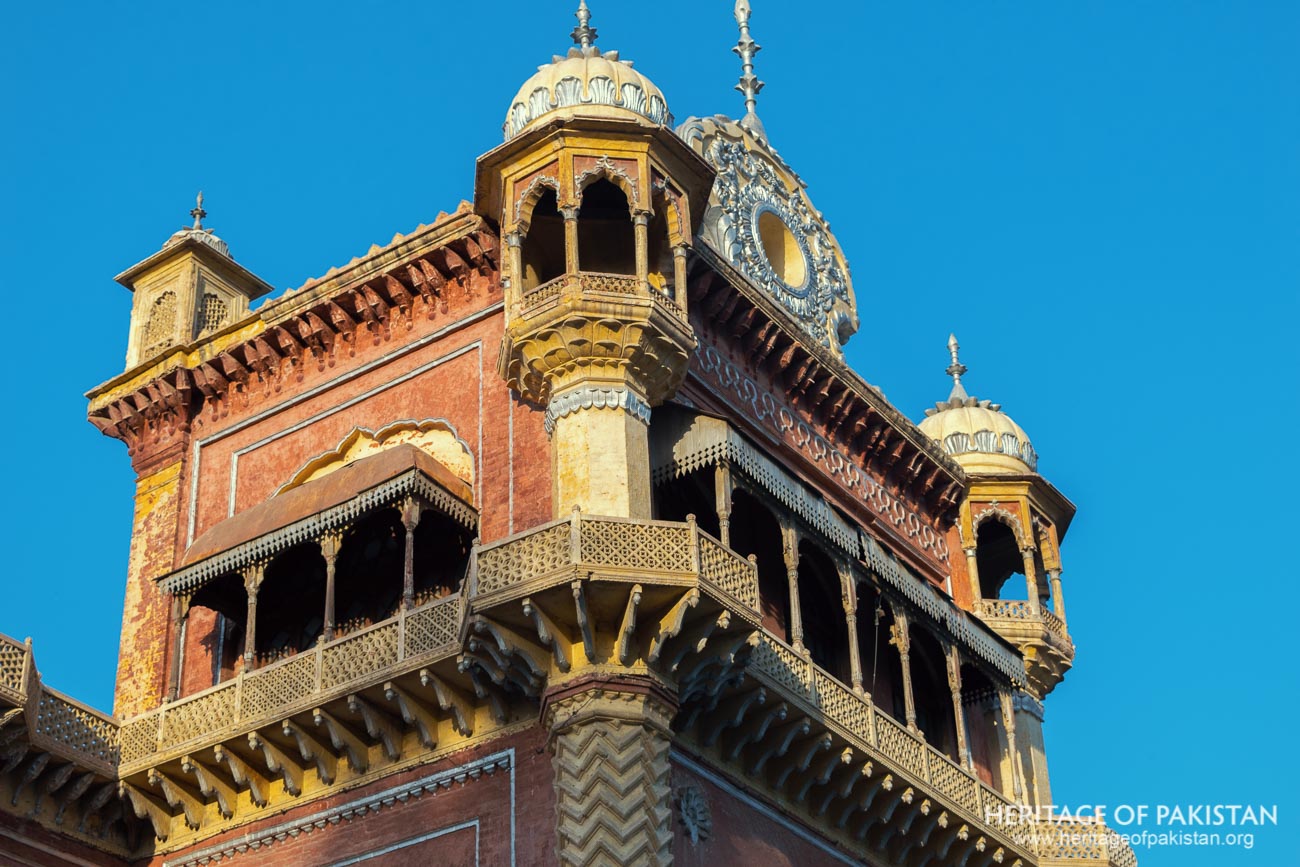Did You Know?
Faiz Mahal was constructed using locally manufactured bricks and featured the craftsmanship of skilled artisans from Bahawalpur and Jodhpur
27°32'19.5"N 68°45'16.5"E
Faiz Mahal was constructed using locally manufactured bricks and featured the craftsmanship of skilled artisans from Bahawalpur and Jodhpur
The Best Time to Visit Sindh Province is Winters. Preferably from September to April Peak Summers (May to August) can get extremely hot with temperatures reaching higher than 40 °C . Hence Summers are not recommended.


Faiz Mahal is a stunning example of the Talpur dynasty's architectural legacy in Khairpur. Khairpur, originally known as Suhrab Pur, was founded in 1783 by Mir Sohrab Khan, who established the Khairpur branch of the Talpur family. Khairpur is located in the Sindh province of Pakistan and lies along the Khairpur East Canal, approximately 18 kilometers south of the Indus River. The city has since been a significant cultural and historical hub, with Faiz Mahal being one of its most notable landmarks.
The construction of Faiz Mahal, a magnificent three-story palace, began during the rule of Mir Faiz Muhammad Khan, who reigned from 1894 to 1909. The construction commenced in 1895 and was completed within two years. However, some historical records suggest that the construction period spanned from 1903 to 1905. Initially, Khan Bahadur Qadirdad Khan, the Minister of State, resumed the work, and after his death, Sardar Muhammad Yaqoob oversaw the completion of the project in 1905. The construction and decoration were meticulously supervised by Ghulab Singh.
 Architecture of Faiz Mahal combines various traditional styles
Architecture of Faiz Mahal combines various traditional stylesBricks for Faiz Mahal were manufactured locally, and skilled artisans and masons from Bahawalpur and Jodhpur, along with local labor, were engaged in the construction. This collaboration resulted in an architectural masterpiece that stands out prominently among the buildings of Khairpur. Faiz Mahal was built to replace a larger haveli that had collapsed in a flood, serving not only as a royal residence but also as a center for royal ceremonies where the Mir received guests of high rank.

Despite its grandeur, a great tragedy befell the founder of Faiz Mahal. Mir Faiz Muhammad Khan, who commissioned the palace, only spent one night there, leaving the next day due to feelings of claustrophobia. As a result, the palace was primarily used as a guest house. Over the years, it has hosted British Viceroys, Governors, and other dignitaries. Several Presidents and Prime Ministers of Pakistan have also stayed at Faiz Mahal, adding to its historical significance.
Today, Faiz Mahal serves as the residence of H.H. Mir Murad Ali Khan Talpur II and his sons, Prince Abbas Raza Talpur and Prince Mehdi Raza Talpur. The palace continues to be a symbol of the rich heritage and history of the Talpur dynasty and the Khairpur state.
Khairpur itself was a princely state situated on the banks of the Indus River. Its capital city, Khairpur, remained a center of power and culture in the region. The Gazetteer of the Province of Sind: Sukkur 1919 refers to Faiz Mahal as a "magnificent guest house located on spacious grounds," highlighting its grandeur and the significant role it played in the history of the region.
The architectural brilliance of Faiz Mahal is a blend of various influences, reflecting the craftsmanship of the artisans. It combines Sindhi, Sikh, and Rajasthani architectural practices. The palace's design and layout were intended to reflect the opulence and grandeur befitting the Talpur rulers.
The palace also serves as a private museum and various historical artefacts, documents and photographs have been displayed for the visitors. It displays a variety of documents pertaining to the Khairpur princely state, as well as a variety of portraits of Talpur Mirs.
 Architecture of Faiz Mahal, Khairpur, Sindh
Architecture of Faiz Mahal, Khairpur, SindhFaiz Mahal's architecture is a beautiful amalgamation of various styles of traditional design, combining elements from Sikh, Sindhi, and neighboring Rajasthani practices. The palace is adorned with exquisite jharokas (overhanging enclosed balconies), intricate jaalis (lattice screens) and detailed Sikh-style domes. The overall impression of the building is highly detailed and decorative. The palace's corridors are equally beautiful, with equally beautiful details. The lush spacious gardens in front of the palace make for a beautiful and impressive setting that goes well with its grandeur.
At the heart of the palace lies the main darbar hall, a grand double-heighted room. The hall hosts a museum displaying a collection of documents, manuscripts, and photographs that chronicle the history of the Khairpur state and the royal Talpur family. These documents are available for public viewing, offering a glimpse into Khairpur State's history and the legacy of its rulers. The museum's artifacts and the well-preserved royal furniture provide an authentic sense of palace's history.
 Close up Jharoka of Faiz Mahal, Khairpur
Close up Jharoka of Faiz Mahal, KhairpurThe architectural style of Faiz Mahal is an impressive fusion of Sikh, Sindhi, Rajasthani, and Indo-Saracenic influences. The palace's domes are particularly reminiscent of the Indo-Saracenic style, which is prevalent across the Indian subcontinent. The details of the domes also reflect Sikh style architectural influence. This blend of styles creates a unique and highly detailed design that stands out. The stucco work on the walls of Faiz Mahal is more characteristic of the Sindhi style than that of Jodhpuri or Sikh influences.

The structure of Faiz Mahal is another interesting study. It is a complete load-bearing wall structure, utilizing heavy girders and joists in the roof construction. The building is made from red burnt bricks bonded with lime and sand mortar, with well-finished flush joints in brick red exteriors and lime plastered interiors. The high roofs at various levels ensure proper ventilation, contributing to the building's durability and comfort.
The employment of Sikh architecture and craftsmen from Jodhpur and Bahawalpur reflects the cultural exchange and artistic traditions of the Indian subcontinent during that period. This collaboration is evident in the V-shaped brick pattern columns of Faiz Mahal, which resemble tree trunks with a continuous climb, akin to the indigenous date tree. The intricate sandstone jaali work is a masterpiece of craftsmanship, consisting of separate molded pieces assembled into a cohesive and artistic whole.
The arches of Faiz Mahal, especially the multifold arches on the front façade, are a recurring decorative element that enhances the beauty of the corridors. These arches not only add to the aesthetic appeal but also demonstrate the skill and artistry of the craftsmen involved in the palace's construction. Behind the darbar hall is a meeting hall, featuring a beautifully adorned ceiling that adds to the palace's opulence. The floors of the palace are decorated with beautiful geometric designs.
Faiz Mahal is not only a beautiful piece of architecture, but it is also a sign of Khairpur's rich history and culture. The building and design of it show how the Talpur dynasty left a rich legacy in the art and architecture of the area. The palace is a reminder of how the Indian subcontinent brought together different kinds of art and culture in the late 1800s and early 1900s.
 Architectural details of Faiz Mahal, Khairpur
Architectural details of Faiz Mahal, Khairpur
Discover the Faiz Mahal image gallery and immerse yourself in photographs

All Photographs by Syed Noor Hussain and Sania Azhar.
All Rights Reserved. Photos may be used for Non-Commercial, Educational, Artistic, Research, Non-Profit & Academic purposes.
Commercial uses require licensing agreement.


Add a review